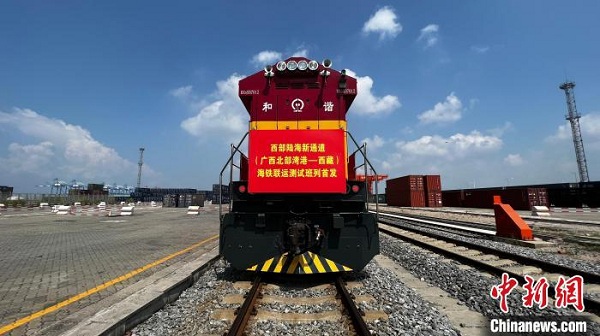1st Beibu Gulf, Tibet rail-sea train departs

The first rail-sea intermodal train on the New International Land-Sea Trade Corridor running from Beibu Gulf to Tibet is prepared for departure. [Photo by Song Chi/China News Service]
The first rail-sea intermodal train on the New International Land-Sea Trade Corridor running from Beibu Gulf to Tibet departed from Qinzhou, Guangxi Zhuang autonomous region, on Sept 17.
The X9574 train was loaded with daily use cargo such as clothes and shoes. It will arrive in Lhasa in the Tibet autonomous region in around 12 to 14 days; its cargo will then cross the Nepalese border via the Keyrung Checkpoint, which saves around 20 days compared with traditional marine transportation.
The New International Land-Sea Trade Corridor now reaches 335 ports in 113 countries and regions all over the world and its cargo categories, expanded to over 640, include auto parts, computer accessories, and new energy vehicles. Previously, it had just over 50 cargo categories, covering items like ceramics and plates, according to Huang Jiangnan of China Railway Nanning Group.
Of note, the corridor can save more than 10 days of transportation for countries like Indonesia and Malaysia exporting cargo to West China as they used to transport it to west coastal area of China and then forward it to destinations by road or water, a roughly one-month process.
In the first seven months of 2022, 92,000 TEUs were transported on the corridor, up 52 percent year-on-year. Among them, 42,000 were for foreign trade with RCEP member countries.
As of Sept 13, 519,600 TEU containers had been transported on the corridor, a 23.8 percent growth year-on-year.
